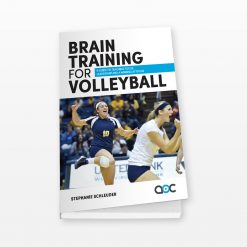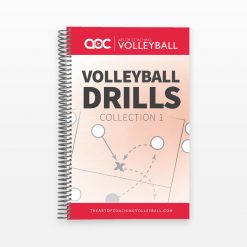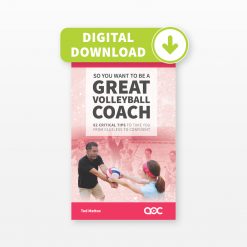Injury Prevention for Volleyball
$24.99
It’s often said that injuries are a part of sports. This is true, but it’s also true that many injuries can be avoided – or lessened in severity – if athletes follow a well-thought-out prevention plan. This book offers just that!
Combining the expertise of volleyball coach and certified strength and conditioning coach Marie Zidek and certified athlete trainer Patrick Langit, Injury Prevention for Volleyball provides over 45 exercises and workout plans targeted at primary risk areas: shoulder, low back, knee and ankle. Each exercise includes a diagram highlighting affected muscles, still image examples of the exercise being performed and an online video showing the exercise being performed properly.
With guidance from the authors and a few minutes of extra training each day, players can increase their chances of staying healthy and playing their best volleyball all season long.
Exercises and workout plans for keeping players injury-free all season long
Who should use this book?
Injury Prevention for Volleyball is for athletes who are serious about staying healthy and coaches who are serious about keeping their athletes healthy. The book focuses on easy-to-follow injury-prevention exercises for four key areas of the body: shoulders, low back, knees and ankles. Whether you’re playing the game or teaching it, the information you’ll find in this book will help pave the way to peak performance and optimal health.
– – –
What’s inside:
Introduction
Section 1: Determining the Athlete’s Starting Point
Section 2: Shoulder Maintenance
Section 3: Low Back Maintenance
Section 4: Knee Maintenance
Section 5: Ankle Maintenance
Section 6: Maintenance Tools
Section 7: Injury Prevention Plan Strategies
Section 8: Nutrition, Sleep and Other Important Stuff
Final Thoughts
– – –
Sneak Peek from the Introduction: 3 Ways to Use This Book
Volleyball is one of the most violent non-contact sports on the body. The torque moments created on joints when rotating to serve or attack, the forces absorbed when landing or changing directions, the stability needed during a jump set, and the sheer volume of work that the body has to endure during just one match are exponentially high. This book targets areas of the body that need to be prepared to handle these loads and includes a graphic that will tell you exactly which skills the exercise helps.
You can use this book in many different ways, but here are three of the main ones:
- Self-evaluate areas of your body that take the majority of the loads from playing volleyball. Once you’ve done this, you can flip to the section that targets those specific areas.
- Focus on pain prevention in the areas of your body that get sore from a high amount of volleyball work, including the Big Four: knee, shoulder, ankle and low back.
- Use the workout plan section to weave these exercises into your practice regime, games and strength and conditioning. Note that this book works best in conjunction with a strength and conditioning regimen separate from these maintenance exercises.
We invite you to keep this book with you as much as possible so you can reference it any time. Put it in your bag. Bring it to the gym, practice or even tournaments. Use it to accompany the start or end of your training sessions or to keep your muscles warm or to work some mobility in between matches. Eventually, you’ll be able to build your routine based on what you believe are your biggest needs.
– – –
Illustration Guide
With each exercise in the book, we’ve included illustrations to indicate which volleyball skills are targeted and which muscle groups are strengthened. For example, if the exercise targets the rhomboids, lats and triceps, the illustration will look like this:
– – –
About the Authors


NOTE FROM THE AUTHORS
The text, graphics and images contained in this book are based solely on the opinion of its authors and should be used only as general recommendations. No material in the book is intended to be a substitute for professional medical advice, diagnosis or treatment. Always seek the advice of a physician or other qualified healthcare provider with any questions you may have regarding a medical condition or treatment.
| Weight | 1 lbs |
|---|---|
| Dimensions | 8 × 5.5 × .5 in |
| Language | English |
| Format | Paperback |
| Pages | 127 |
| ISBN | 979-8-9895782-0-7 |






































Reviews
There are no reviews yet.